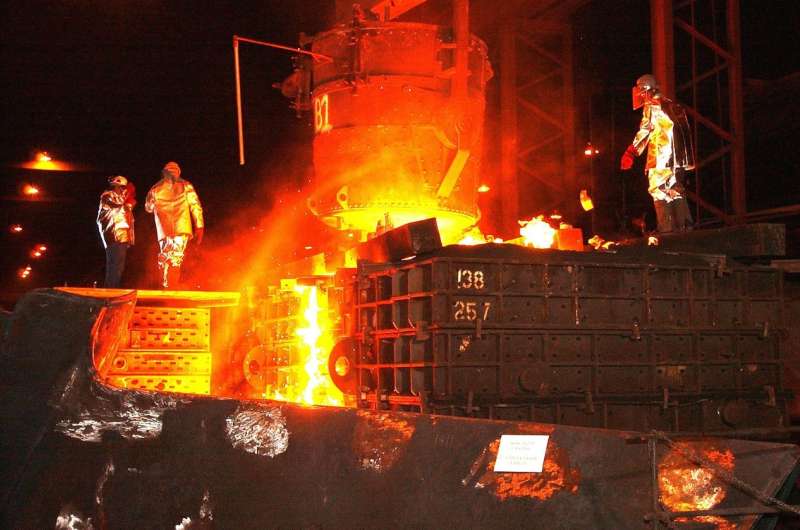Path to zero emissions starts out easy, but gets steep

Carbon dioxide emissions from human activities must approach zero within several decades to avoid risking grave damage from the effects of climate change. This will require creativity and innovation, because some types of industrial sources of atmospheric carbon lack affordable emissions-free substitutes, according to a new paper in Science from team of experts led by University of California Irvine's Steven Davis and Carnegie's Ken Caldeira.
In addition to heating, cooling, lighting, and powering individual vehicles—subjects that are often the focus of the emissions discussion—there are other major contributors to atmospheric carbon that are much more challenging to address. These tough nuts to crack include air travel; long-distance freight by truck, train, or ship; and the manufacture of steel and cement.
"We wanted to look closely at the barriers and opportunities related to the most difficult-to-decarbonize services," said lead author Davis.
The barriers they analyzed included:
- The expected increase in demand for air travel and freight shipping, sectors that already contribute about 6 percent of global emissions.
- The manufacture of cement and steel, which release 1.3 and 1.7 billion tons of carbon dioxide emissions into the atmosphere annually and are also expected to grow as infrastructure demands increase, particularly in the developing world.
- The necessity of generating and transmitting electricity with near 100 percent reliability, despite variability in renewable energy sources such as wind and solar.
"Taken together these 'tough-nut' sources account for a substantial fraction of global emissions," Caldeira said. "To effectively address them, we will need to develop new processes and systems. This will require both development of new technologies and coordination and integration across industries."
Possibilities that the team analyzed include, but aren't limited to, the synthesis of energy dense hydrogen or ammonia-based fuels for aviation and shipping, new furnace technologies in the manufacture of concrete and steel, and tools to capture and safely store hydrocarbon emissions.
But the costs of implementing and scaling up these technologies to overhaul the transportation, construction, and energy storage industries will present hurdles, they warn. Plus, it will be necessary to overcome the inertia of existing systems and policies to create something new and better.
"We don't have a crystal ball to foresee what technologies will exist a century from now," Caldeira continued. "But we know that people will want buildings, transportation, and other energy services and we can try to design our energy system so that it is able to take advantage of new inventions as they come along."
More information: S.J. Davis el al., "Net-zero emissions energy systems," Science (2018). science.sciencemag.org/cgi/doi … 1126/science.aas9793
Journal information: Science
Provided by Carnegie Institution for Science



















